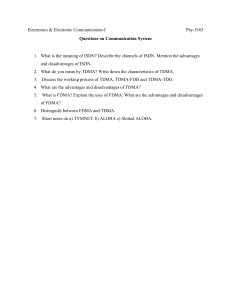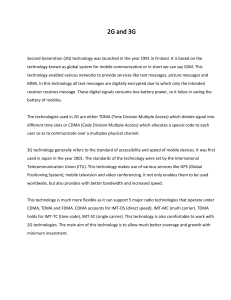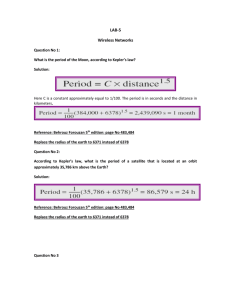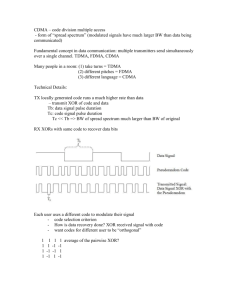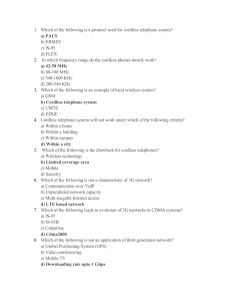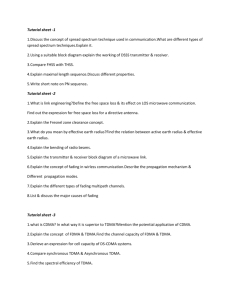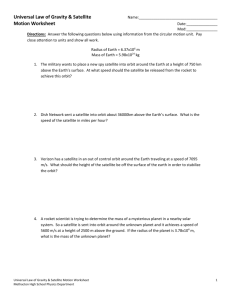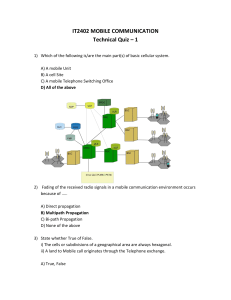206-A - St.Joseph's College
advertisement
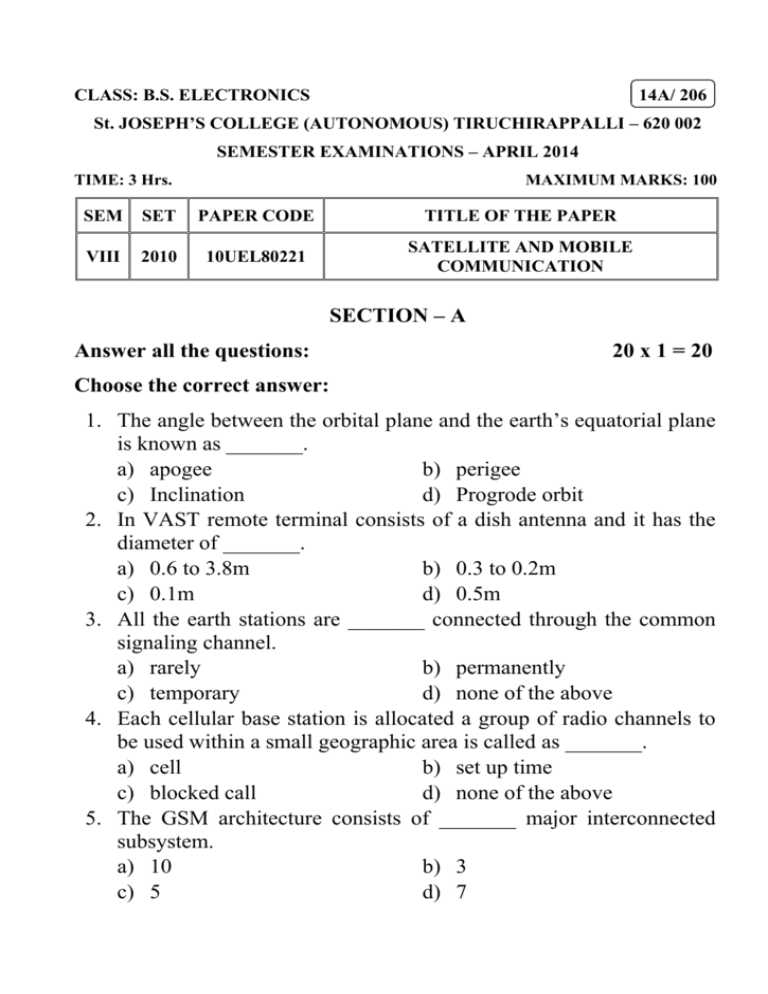
CLASS: B.S. ELECTRONICS 14A/ 206 St. JOSEPH’S COLLEGE (AUTONOMOUS) TIRUCHIRAPPALLI – 620 002 SEMESTER EXAMINATIONS – APRIL 2014 TIME: 3 Hrs. MAXIMUM MARKS: 100 SEM SET PAPER CODE TITLE OF THE PAPER VIII 2010 10UEL80221 SATELLITE AND MOBILE COMMUNICATION SECTION – A Answer all the questions: 20 x 1 = 20 Choose the correct answer: 1. The angle between the orbital plane and the earth’s equatorial plane is known as _______. a) apogee b) perigee c) Inclination d) Progrode orbit 2. In VAST remote terminal consists of a dish antenna and it has the diameter of _______. a) 0.6 to 3.8m b) 0.3 to 0.2m c) 0.1m d) 0.5m 3. All the earth stations are _______ connected through the common signaling channel. a) rarely b) permanently c) temporary d) none of the above 4. Each cellular base station is allocated a group of radio channels to be used within a small geographic area is called as _______. a) cell b) set up time c) blocked call d) none of the above 5. The GSM architecture consists of _______ major interconnected subsystem. a) 10 b) 3 c) 5 d) 7 Fill in the blanks: 6. The Anamolic period PA is _______. 7. _______ is used to detect the rim of the earth against the background of space. 8. The time interval from the start of one reference burst to the next is called as _______. 9. _______ increases the capacity of a cellular system since it increases the number of times that channels are reused. 10. _______ is a system that connects subscribers to the local telephone system wirelessly. State True or False: 11. Elevation is the angle measured upward from the horizontal plane to the path. 12. Tracking is the function of determining the current orbit and position of the space craft. 13. Both FDMA and TDMA can be operated as pre-assigned or demand assigned systems. 14. Interference is the miner limiting factor in the performance of cellular radio systems. 15. The output of the deviation limiter is filtered using a post deviation limiter. Match the following: 16. Transmitter 17. Tracking - a) 500m - b) Frequency reuse 18. CDMA - c) Microwaves 19. Sector 20. PACS - d) Code signal - e) space craft SECTION – B Answer all the questions: 5 x 4 = 20 21. a. Differentiate between Active and passive satellite. OR b. State and explain Kepler’s law. 22. a. Explain the satellite power supply system. OR b. With necessary block diagram, explain the concept of earth station. 23. a. Describe the function of spread spectrum technique. OR b. Write a brief note on “Basic CDMA system”. 24. a. Write a short note on “Frequency reuse”. OR b. Describe the functions of “Handoff strategies”. 25. a. Write a brief note on “AMPS voice modulation process”. OR b. List any four differences between Bluetooth and Zigbee. SECTION – C Answer any FOUR questions: 4 x 15 = 60 26. a. Write down the types of orbit. b. Explain the following terms. (i) Orbital perturbation (ii) Look angles and slant range 27. Explain the following VSAT with neat block diagram. (i) Remote terminal (ii) HUB station 28. Explain the Multiple access techniques of FDMA and TDMA. 29. a. Explain the following terms. (i) set up time (ii) blocked call (iii) Holding time (iv) Traffic intensity (v) Grade of service (GOC) b. Solve the problem by using given values. Au = 1000; u = 6; c = 8 (i) Find total traffic intensity (A) (ii) Traffic intensity per channel (Ac) 30. a. Write a brief note on “Wireless in Local Loop”. b. With neat block diagram, explain the architecture of PACS. **************

